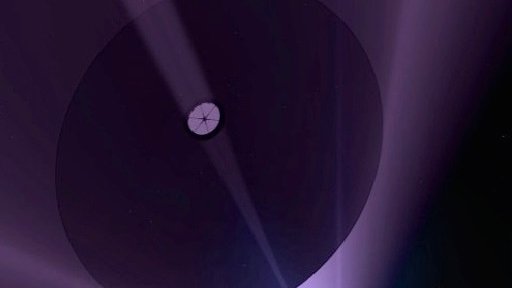Lasers—yes, lasers—could propel a space probe that would sail at 25% of the speed of light, making other stars reachable within human lifetimes.
At a recent talk at Harvard University, Philip Lubin of the University of California, Santa Barbara, presented a plan to launch small probes deep into space. Using an array of laser thrusters, a probe weighing one gram (just 0.035 ounces) would travel 4.4 light years the nearest star, Alpha Centauri, in just two decades. That’s only twice as long as it took the New Horizons spacecraft to fly by Pluto.

Conventional spacecraft get their power from burning chemical fuel. By sending propellant in one direction, the ship is pushed in the other. But to increase thrust, the ships have to carry more fuel mass. That limits the distance and maximum speed the ship can reach.
“That is not going to get you anywhere near relativistic speeds,” Lubin said in a presentation last fall.
Instead, Lubin’s plan relies on using a bank of lasers to accelerate the spacecraft. This is easier to build than a single powerful laser. By reflecting the lasers off a wafer-thin sail, the craft would build up momentum just from the energy of laser photons bouncing off the sail. It’s the same principle as fuel propulsion, but in this case the fuel has no mass.
Getting around the problem of fuel mass gives the system interstellar potential. A large mothership orbiting Earth would concentrate its bank of lasers on the small spacecraft’s sail to launch it.
Here’s Charles Q. Choi, reporting for Popular Science:
Eventually, the scientists calculate that a 50- to 70-gigawatt array that is 10 kilometers by 10 kilometers large in Earth orbit could propel a gram-sized wafer-like spacecraft with a 1-meter-wide sail to more than 25 percent of the speed of light after about 10 minutes of illumination, which could reach Mars in 30 minutes and Alpha Centauri in about 20 years. The researchers suggest this array could launch roughly 40,000 relativistic wafer-sized probes per year — each “wafersat” would be a complete miniature spacecraft, carrying cameras, communications, power and other systems.
Lubin’s team isn’t just keeping its ideas on the drawing board. The project has won Phase I funding from NASA’s Innovative Advanced Concepts program. They’ve tested small ground-based laser arrays comparable to what would power the space probe.
There are some engineering challenges to get around before the probe sets sail. They need to develop a rechargeable battery with an extremely long life to keep powering the onboard electronics throughout the trip.
A more basic problem is braking. The team currently doesn’t have a good way to reduce the momentum of the craft. The first few probes might just have to zip past distant stars and planets without staying to look around.


